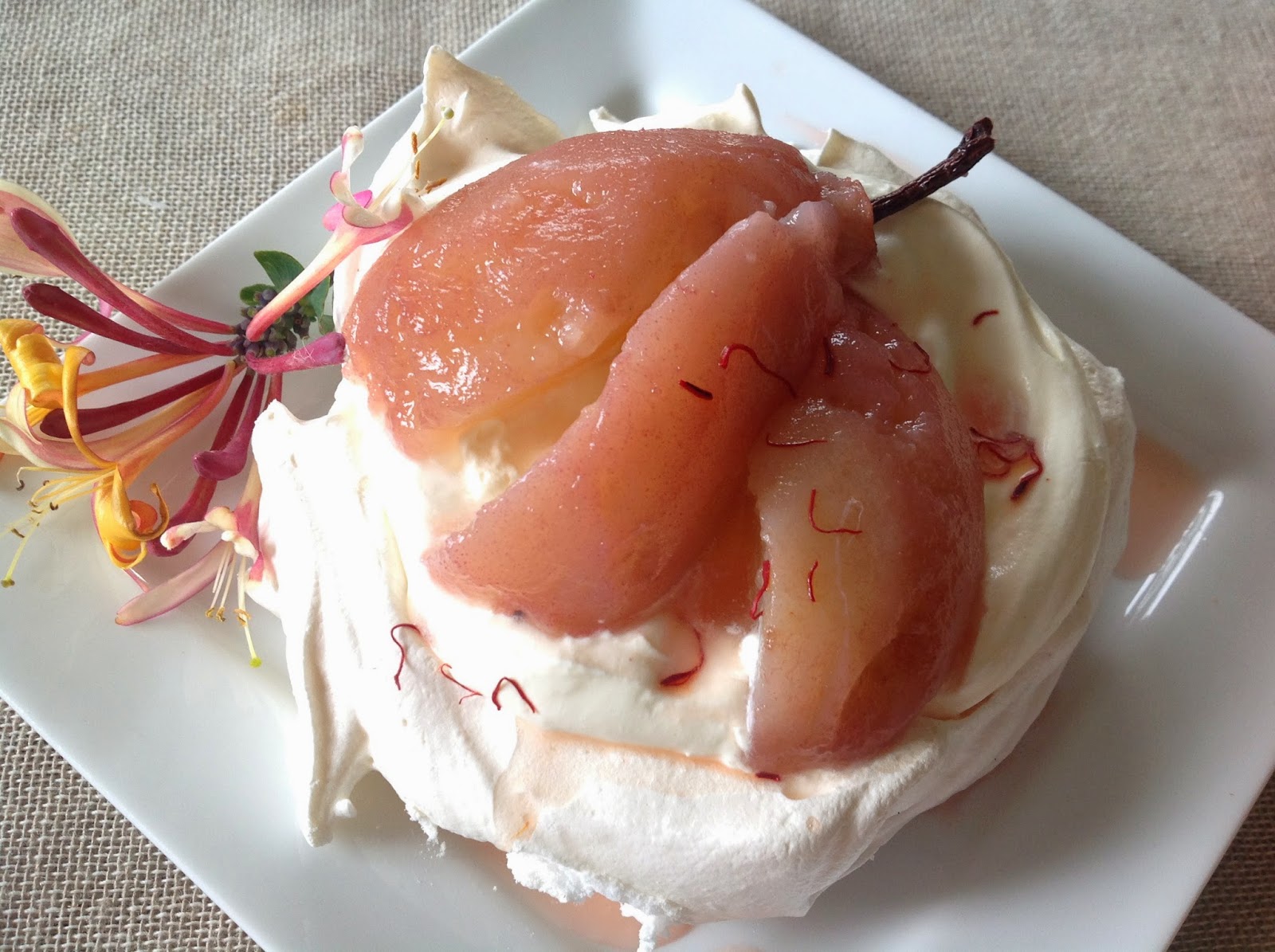Polpo's Saffron Pears with Meringue
One of my sons gave me the most fabulous cookbook at Christmas, which has been an inspiration. Polpo is a visual feast of Venetian and Italian recipes, and its puddings are simple and delicious. This is one of them - a lovely confection of poached pears and meringue with a delicately flavoured syrup. For some reason, the saffron I was brought back from Africa (also thanks Alexander!) gives everything a beautiful rose-pink colour instead of the traditional yellow. The original meringue quantity in the recipe was enormous, so I have halved it below. You do need to use firm pears - mine were too soft, which is why they look a little rustic!
 |
| Saffron Pears with Meringue |
Saffron
Pears with Meringue
4 egg whites
8oz/225g caster sugar
8 floz/250ml white wine
7oz/200g caster sugar
6 firm pears
Pinch of saffron
6floz/200ml whipping cream (I prefer to
use double!)
Preheat the oven to 130 deg C and line
two baking sheets with parchment. Whisk
the eggs until they form stiff peaks, then add the sugar slowly (as the
meringue weeps otherwise!). The mixture
should be stiff and glossy when you have finished.
Their great tip is to stick the edges of
the paper down with a little mixture, which stops the parchment from
lifting. Make six nests of meringue
with a spoon/pipe six nests using a ½” pipe (no, I couldn't be bothered either). Bake for about 1.5 hours until the meringues
sound hollow when tapped at the base.
Leave to cool.
Put the sugar, wine and 3 pints/1.5
litres of water into a pan wide enough to take the pears side by side. Stir until the sugar dissolves, then leave the
liquid bubbling while you peel the pears, leaving the stalks on. As you prepare each pear, drop it straight
into the simmering syrup. Add the pinch
of saffron and simmer on a low heat until the pears are soft (the recipe said 1
hour, I reckon 20-30 mins!). Remove from
the heat and allow the pears to cool.
Fast boil the liquid to reduce it to a syrup. When
the pears are cool, remove the cores and quarter them, keeping the tops
attached to the stalk (be warned: this is nearly impossible!).


Comments
Post a Comment